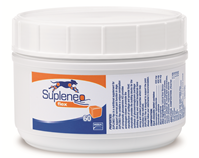If you suspect that your dog has arthritis, don’t panic. Instead, congratulate yourself for being in touch with your dog’s health and smart enough to recognise that he may have a problem. Then, pick up the phone and call your veterinarian for advice.
What Your Vet Will Look For
History. Your veterinarian will start by taking a history of your dog’s recent behaviour, trying to identify any changes that point to pain. Often, just chatting to your vet about your dog will trigger memories that had eluded you earlier.
Gait. You will be asked to walk your dog up and down either in the consulting room or in the clinic car park while your veterinarian examines his gait. Make sure you make him move at different paces because a limp may be more obvious at a trot than at a walk.
Physical Examination. Next, your veterinarian will carry out a thorough physical examination. The aim is to localise the pain while also looking for other indicators of osteoarthritis, such as swelling of a joint and decreased range of motion.
Diagnostic Testing
Based on your dog’s age, breed and weight, and the results of their examination, your vet will suspect that osteoarthritis is causing his pain. However, she may also recommend further testing if she feels it is necessary.

X-Rays. It’s a standard procedure to take x-rays of joints that are thought to be affected by osteoarthritis. These may show excessive fluid in the joint cavity and irregularities in the bone.
Blood work. This will help to identify whether there is infection anywhere in the body (including the joints) and if your dog’s immune system is involved in causing his sore joints. It can also point to the presence of a whole body disease that can cause arthritis such as Lyme Disease. Another important advantage of doing blood tests is to assess how well your dog’s liver and kidney are working. Some arthritis treatments can adversely affect these organs and if there’s a pre-existing condition, an alternative treatment can be chosen.
Joint fluid sample. Your veterinarian may use a needle to extract fluid from the joint to look for markers of inflammation or infection.
Bone nuclear scintigraphy, MRI, CT. If your veterinarian is still unsure of the diagnosis, she may suggest bone nuclear scintigraphy, MRI or CT scans. These tests usually require referral to an orthopaedic specialist.
Canine Arthritis Treatment Options
There is no cure for osteoarthritis and the disease is progressive, but treatment will reduce the pain and slow the disease’s progression. Your veterinarian may recommend a combination of the following:
- Weight control
- Dietary change
- Controlled exercise and physical therapy
- Anti-inflammatory medications
- Painkillers
- Disease modifying agents
- Nutritional joint supplements, such as Supleneo flex
Supleneo flex is a daily supplement, which is suitable for all breeds, sizes and ages of dog and contains the key ingredients that can improve joint health, such as glucosamine. In addition, Supleneo flex’s natural liver flavour means dogs love the taste, making it’s easy and fun to give them their supplement every day. It is low calorie, so you can give it to your dog, instead of a treat.
For further information go to www.freedomtomove.co.uk
Dealing with canine osteoarthritis primarily requires a change in perspective. The initial changes to yours and your pet’s lifestyle are not going to be easy but, in a while, you will realize that the diagnosis is not the end of the world. With your help, your pet can continue to look forward to a high quality of life for years to come.

